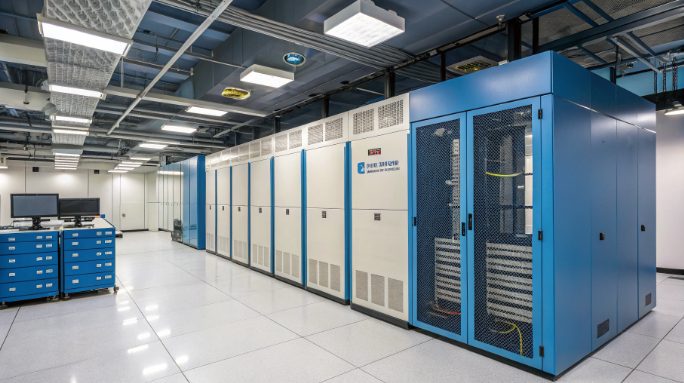Install Environment on CentOS 7.6: Troubleshooting Tips

Navigating CentOS 7.6 environment setup can be tricky, especially when deploying on Hong Kong hosting infrastructure. This guide dives deep into common pitfalls and their solutions, helping you maintain a robust server environment. Whether you’re battling Yum repository issues or tackling dependency hell, we’ve got you covered.
Pre-Installation System Check
Before diving into troubleshooting, let’s establish a solid foundation. Run these commands to assess your system’s readiness:
$ uname -r # Check kernel version $ df -h # Verify disk space $ free -m # Check available RAM $ ping 8.8.8.8 # Test network connectivity
These diagnostics help identify potential bottlenecks before they become problematic. Pay special attention to available disk space – CentOS 7.6 requires minimum 20GB for a full installation.
Yum Repository Configuration Issues
Repository problems often stem from network restrictions or outdated mirrors. Here’s a systematic approach:
# Back up current repos $ mkdir /etc/yum.repos.d/backup $ mv /etc/yum.repos.d/*.repo /etc/yum.repos.d/backup/ # Configure Hong Kong mirrors $ curl -o /etc/yum.repos.d/centos.repo http://mirrors.hk.net/centos/7/centos.repo $ yum clean all $ yum makecache
Dependency Conflict Resolution
Dependency conflicts can halt your entire setup process. Let’s tackle this systematically with proven debugging techniques:
# Check for broken dependencies $ yum check $ yum deplist package_name # Force package consistency $ yum clean all $ rpm --rebuilddb
When encountering version conflicts, avoid the temptation of force-installing packages. Instead, implement this strategic approach:
- Document current package versions
- Check compatibility matrices
- Create installation order diagram
- Test in isolated environment
Network Configuration Debugging
Network issues often masquerade as installation problems. Here’s your debugging toolkit:
# Verify DNS resolution $ cat /etc/resolv.conf $ nslookup google.com # Check firewall status $ systemctl status firewalld $ firewall-cmd --list-all # Test network interface $ ip addr show $ ethtool eth0
Pro tip: Hong Kong servers might require specific routing rules. Configure your network with consideration for the Great Firewall’s impact on connectivity:
# Optimize routing for HK connectivity $ ip route add default via your_gateway_ip $ sysctl -w net.ipv4.tcp_fastopen=3
Security and Permissions Troubleshooting
Security misconfiguration can silently block installations. Implement these checks:
# SELinux status verification $ getenforce $ sestatus # Permission audit $ namei -l /path/to/installation/directory $ getcap -r /usr/bin
Common Software Stack Issues
Let’s dive into specific environment configurations that frequently cause headaches in Hong Kong hosting scenarios:
LAMP Stack
# Apache troubleshooting $ httpd -t $ systemctl status httpd $ tail -f /var/log/httpd/error_log # MySQL diagnostic $ mysqld --verbose --help $ mysqlcheck -A $ tail -f /var/log/mysqld.log
Node.js Environment
# Version management $ curl -o- https://raw.githubusercontent.com/nvm-sh/nvm/v0.39.0/install.sh | bash $ nvm install node $ nvm use node # Common fixes $ npm cache clean --force $ rm -rf node_modules package-lock.json $ npm install
System Log Analysis
Master these log locations and analysis techniques to become a troubleshooting ninja:
# Critical log locations /var/log/messages /var/log/secure /var/log/yum.log /var/log/audit/audit.log # Real-time log monitoring $ journalctl -f $ tail -f /var/log/messages | grep -i error
Advanced Log Analysis Tools
Implement these power tools for deeper insight:
# Install log analysis tools $ yum install logwatch fail2ban $ logwatch --detail high --range all $ fail2ban-client status
Performance Optimization
After resolving installation issues, optimize your environment with these tweaks:
# System performance tuning $ echo 'vm.swappiness=10' >> /etc/sysctl.conf $ echo 'net.core.somaxconn=65535' >> /etc/sysctl.conf $ sysctl -p # I/O scheduler optimization $ echo deadline > /sys/block/sda/queue/scheduler
Monitoring and Maintenance
Implement these monitoring solutions to prevent future issues:
# System monitoring setup $ yum install zabbix-agent $ systemctl enable zabbix-agent $ systemctl start zabbix-agent # Resource monitoring $ top -b -n 1 $ iostat -xz 1 $ netstat -tulpn
Backup and Recovery Strategies
Establish these critical backup procedures:
# Automated backup script #!/bin/bash backup_dir="/backup/$(date +%Y%m%d)" mkdir -p $backup_dir tar -czf $backup_dir/etc_backup.tar.gz /etc mysqldump --all-databases > $backup_dir/db_backup.sql
Quick Reference Troubleshooting Table
| Issue | Command | Solution |
|---|---|---|
| Yum Lock | rm -f /var/run/yum.pid | Removes stale lock file |
| DNS Issues | echo “nameserver 8.8.8.8” >> /etc/resolv.conf | Adds Google DNS |
| Package Conflict | yum clean all && yum update | Refreshes package database |
Conclusion
Mastering CentOS 7.6 environment setup on Hong Kong hosting platforms requires a systematic approach to troubleshooting. By following this guide’s technical procedures and implementing the suggested monitoring tools, you’ll maintain a robust and efficient server environment. Remember to regularly update your system and maintain proper documentation of your configuration changes.
Need further assistance with your CentOS 7.6 environment or Hong Kong server setup? Our technical support team specializes in Linux system configuration and optimization. Feel free to reach out for professional guidance on your specific use case.

